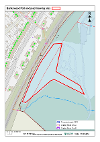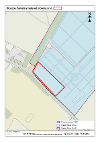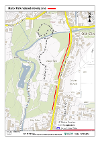Enhancing Biodiversity in our parks
A New Approach to Mowing regimes across the High Peak
In line with the council's Parks Strategy, and as part of our commitment to improving biodiversity across parks and open spaces, we are formalising the changes we have made to our mowing regime over the past couple of years and extending the changes to additional areas within some of these sites. The following are the designated sites:
- Ashwood Park, Buxton
- Granby Road, Buxton
- Temple Fields, Buxton
- Gadley Lane (Serpentine Woods North), Buxton
- Serpentine Walks, Buxton
- Whaley Bridge Memorial Park
- Manor Park, Glossop
- Bankswood Park, Glossop
- Glossop Cemetery
From March 2025, specific areas of land within these parks and open spaces will formally move to a once a year cut and collect mow, allowing for meadow grass and other native species to flourish. This approach is informed by scientific evidence, which suggests that carefully timed mowing and the collection of grass cuttings can create better conditions for a variety of plant species to thrive. This method reduces soil nutrient levels, which helps to suppress the dominance of fast-growing grasses, creating space for wildflowers and other native plant species to flourish. By increasing plant diversity, we hope to support a wide range of pollinators, birds, and other wildlife that rely on these habitats
How will this work?
The new management and formalised mowing schedules will involve:
- Areas of grass to be left unmown from March to create meadows and natural grass verges. This has already been taking place at some of the sites listed above where areas will be extended
- Bioblitz recording initiatives and events - to establish and record baseline species, enabling us to monitor species change over the years. We will be working with the High Peak Biodiversity Network who already undertake this at Serpentine Gardens. Copies of standardised survey forms are available in the downloads section of this page, and we encourage individuals and groups to complete these for our reduced mowing areas, submitting any results to HabitatSurveys@highpeak.gov.uk
- A once a year cut and collect during a September-October window, with all grass cuttings to be collected and removed.
Why are we making this change?
Traditional frequent mowing often encourages the growth of nutrient-demanding grasses while limiting opportunities for other plant and native species to establish. By adopting this reduced mowing strategy, we aim to create richer, more diverse habitats that benefit the environment and local wildlife. The sites chosen will allow us to assess how effective this approach is in real-world conditions, ensuring it aligns with both scientific evidence and the needs of our community.
What to expect
Visitors to the parks and open spaces may notice areas with longer grass and greater plant variety. Framing strips or similar will be cut next to footpaths where these border with the areas of longer meadow grass. Cut-and-collect mowing typically takes 2-3 years to show noticeable improvements in wildflower growth. However, the exact timeline may vary depending on the soil, existing vegetation, and local conditions. Growth will be monitored throughout the year and adjustments may be needed to optimise results.
Changes at these sites will act as a trial phase, with a view to expand the initiative across additional sites in the coming years. This is an important step in managing our parks and open spaces sustainably, balancing ecological health with the need to maintain attractive, functional parks and spaces for everyone to enjoy. Nature is a vital resource for improving physical and mental health for the community and together, we can nurture these amenities for the benefit of future generations while protecting our natural heritage.
Feedback
Have you noticed a difference? Is there still enough space for recreation? Let us know!













